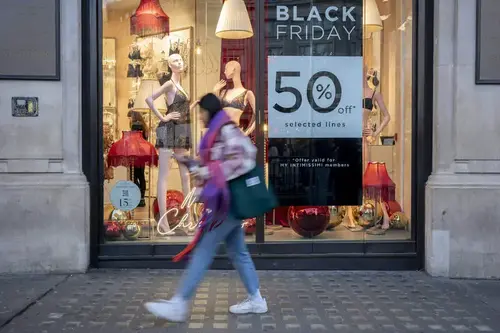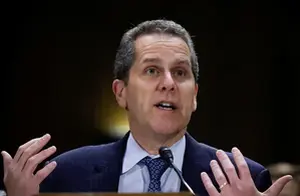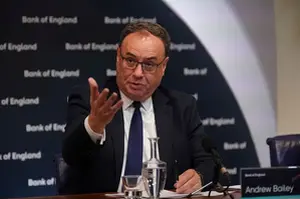
‘There is a slowdown happening’ – Wells Fargo, BofA CEOs point to cooling consumer amid Fed hikes
American consumers are tapping the brakes on spending as the Federal Reserve's interest rate increases reverberate throughout the economy, according to the CEOs of two of the largest American banks.
After two years of pandemic-fueled, double-digit growth in Bank of America card volume, "the rate of growth is slowing," CEO Brian Moynihan said Tuesday at a financial conference. While retail payments surged 11% so far this year to nearly $4 trillion, that increase obscures a slowdown that began in recent weeks: November spending rose just 5%, he said.
It was a similar story at rival Wells Fargo, according to CEO Charlie Scharf, who cited shrinking growth in credit-card spending and roughly flat debit card transaction volumes.
The bank leaders, with their bird's eye view of the U.S. economy, are providing evidence that the Fed's campaign to subdue inflation by raising borrowing costs is beginning to impact consumer behavior. Fortified by pandemic stimulus checks, wage gains and low unemployment, American consumers have supported the economy, but that appears to be changing. That will have implications for corporate profits as businesses navigate 2023.
Read more
"There is a slowdown happening, there's no question about it," Scharf said. "We are expecting a fairly weak economy throughout the entire year, and hopeful that it'll be somewhat mild relative to what it could possibly be."
Both CEOs said they expect a recession in 2023. Bank of America's Moynihan said he expects three quarters of negative growth next year followed by a slight uptick in the fourth quarter.
But, in a divergence that has implications for the coming months, the downturn isn't being felt equally across retail customers and businesses so far, according to the Wells Fargo CEO.
"We have seen certainly more stress on the lower-end consumer than on the upper end," Scharf said. In terms of the companies served by Wells Fargo, "there are some that are doing quite well and there's some that are struggling."
Airlines, cruise providers and other experience or entertainment-based industries are faring better than those involved in durable goods, he said. That sentiment was echoed by Moynihan, who cited strong travel spending.
"People bought a lot of goods, exercised a lot of the freedom they had in discretionary spend over the last couple of years, and those purchases are slowing," Scharf said. "You're seeing significant shifts to things like travel and restaurants and entertainment and some of the things that people want to do."
The slowdown is the "intended outcome" that's desired by the Fed as it seeks to tame inflation, Moynihan noted.
But the central bank has a tricky balancing act to pull off: raising rates enough to slow the economy, while hopefully avoiding a harsh downturn. Many market forecasters expect the Fed's benchmark rate to hit about 5% next year, though some think higher rates will be needed.
"You're starting to see that [slowdown] take hold," Moynihan said. "The real question will be how soon they have to stabilize that in order to avoid more damage; that's the question that's on the table."






